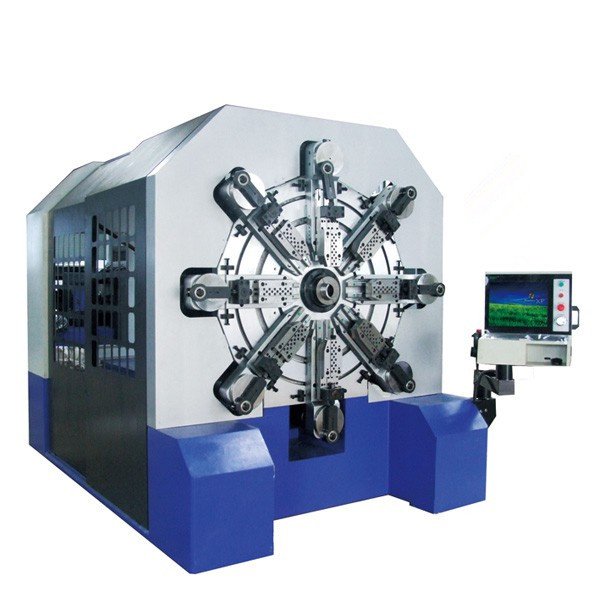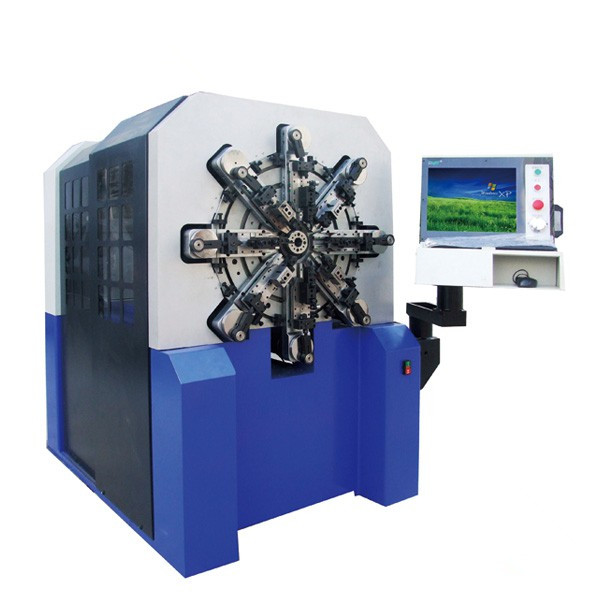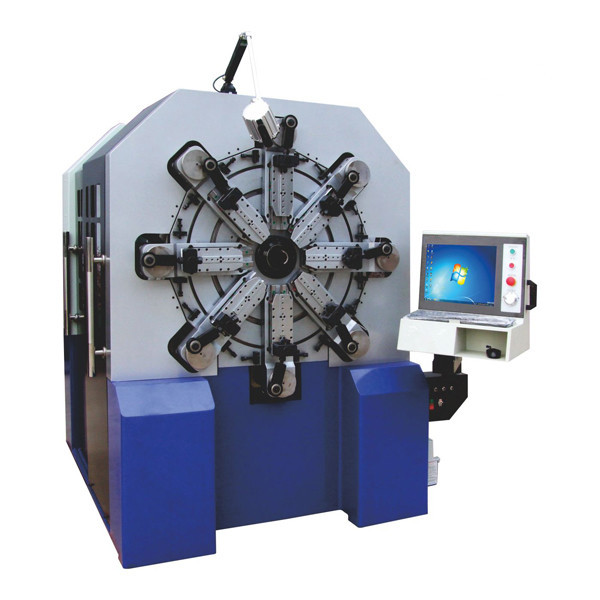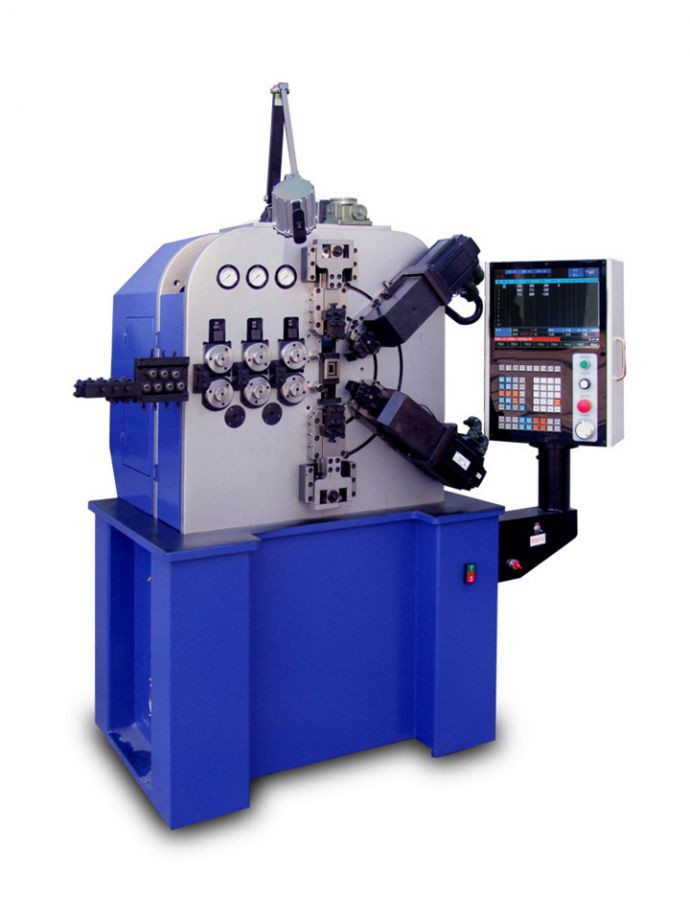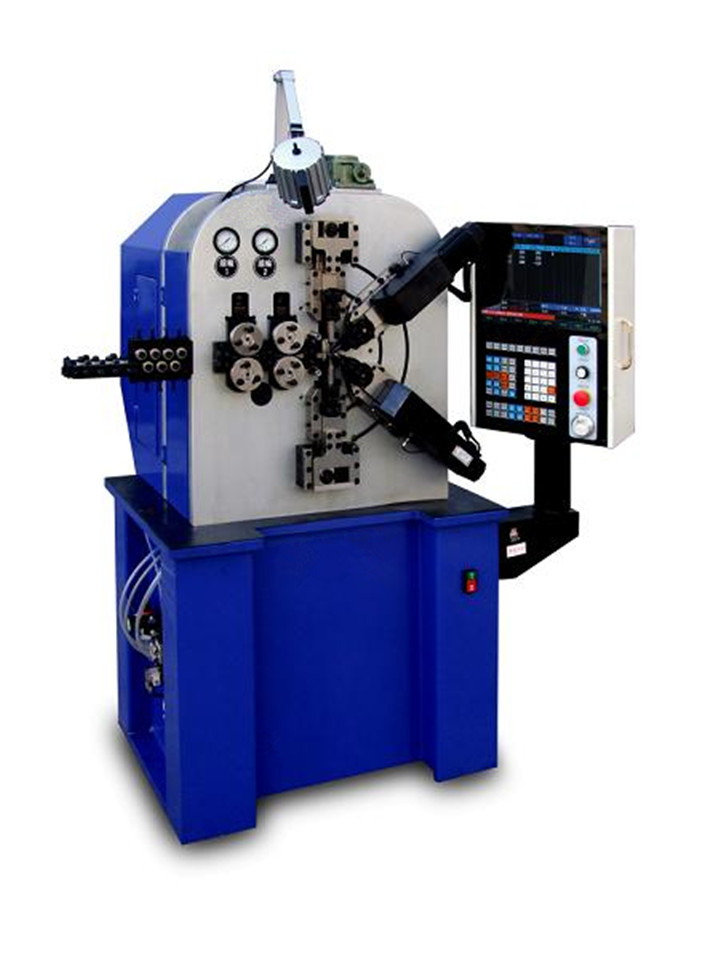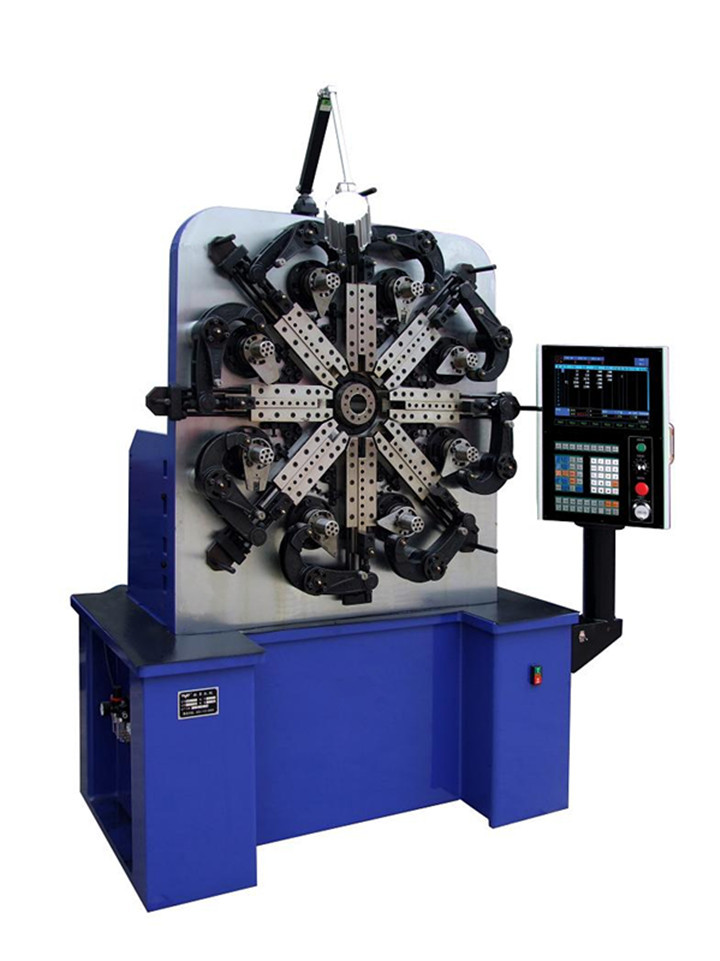
Products
-
Revolutionary 12 axes spring & wire forming machines that allow spring manufacturers to massively produce a variety of springs with high speed and accuracy!
-
Special camless design equipped with SAMCO’s free arm technolgy that enables our series of spring machines to easily produce all kinds of difficult springs that is 30% or more efficient than traditional cam type spring former.
-
Special camless design equipped with SAMCO’s free arm technolgy that enables our series of spring machines to easily produce all kinds of difficult springs that is 30% or more efficient than traditional cam type spring former.
-
CNC8660 is 6-axis compression spring machine, this CNC spring machine for making compression spring, oil seal spring ,battery spring, torsion machine, etc
-
CNC8635 is six-axis compression spring machine, this CNC spring machine for making compression spring, oil seal spring ,battery spring, torsion machine, etc
-
SAMCO supply spring forming machine, CNC8335 is a 3 axis CNC spring machine, can make compression spring, tension spring, torsion spring, coiling spring and wire forms and etc

CNC Routing
CNC routing is a cutting process in which material is removed from a sheet by a rotating tool. For CNC routing, the cutting tool is moved mainly in two dimensions (except for plunging on the Z axis) to achieve the desired part shape. For CNC routing the cutting tool usually rotates about an axis that is perpendicular to the table that holds the material to be cut. A cutting tool hovers over the material from a rotating spindle. A sheet of material is placed on a stationary table below the cutter. While the cutting tool turns, a computer controls the motion of the cutter. The cutter is guided to move through the material, removing portions to create shapes. There are several benefits of CNC routing. The process is cost effective for short runs as setup time is minimal. Complex shapes and high dimensional tolerances are possible. Smooth finishes can be achieved. CNC routing can produce almost any 2D shape provided inside corners have a reasonable radius. Examples of parts made by CNC routing include: sheet metal enclosures, decorative signs, sign lettering, sheet metal mechanisms, etc. CNC routing can process most rigid materials including most metals: Aluminum, Stainless Steel, Copper, Steel, Brass, Titanium, Sterling Silver, Bronze, etc, plus hard plastics and other materials: Nylon, Acetal, Polycarbonate, Polystyrene, Acrylic, Fiberglass, Carbon fiber, Teflon, ABS, PVC, Wood, etc. Cost reduction options include reducing the total cut length, limiting complexity and avoiding intricate features. CNC Routing Design Considerations: •Providing corner radius of the greater of .125" and 15% of sheet thickness is ideal. •Avoid flimsy shapes such as long thin shapes and thin walls.




